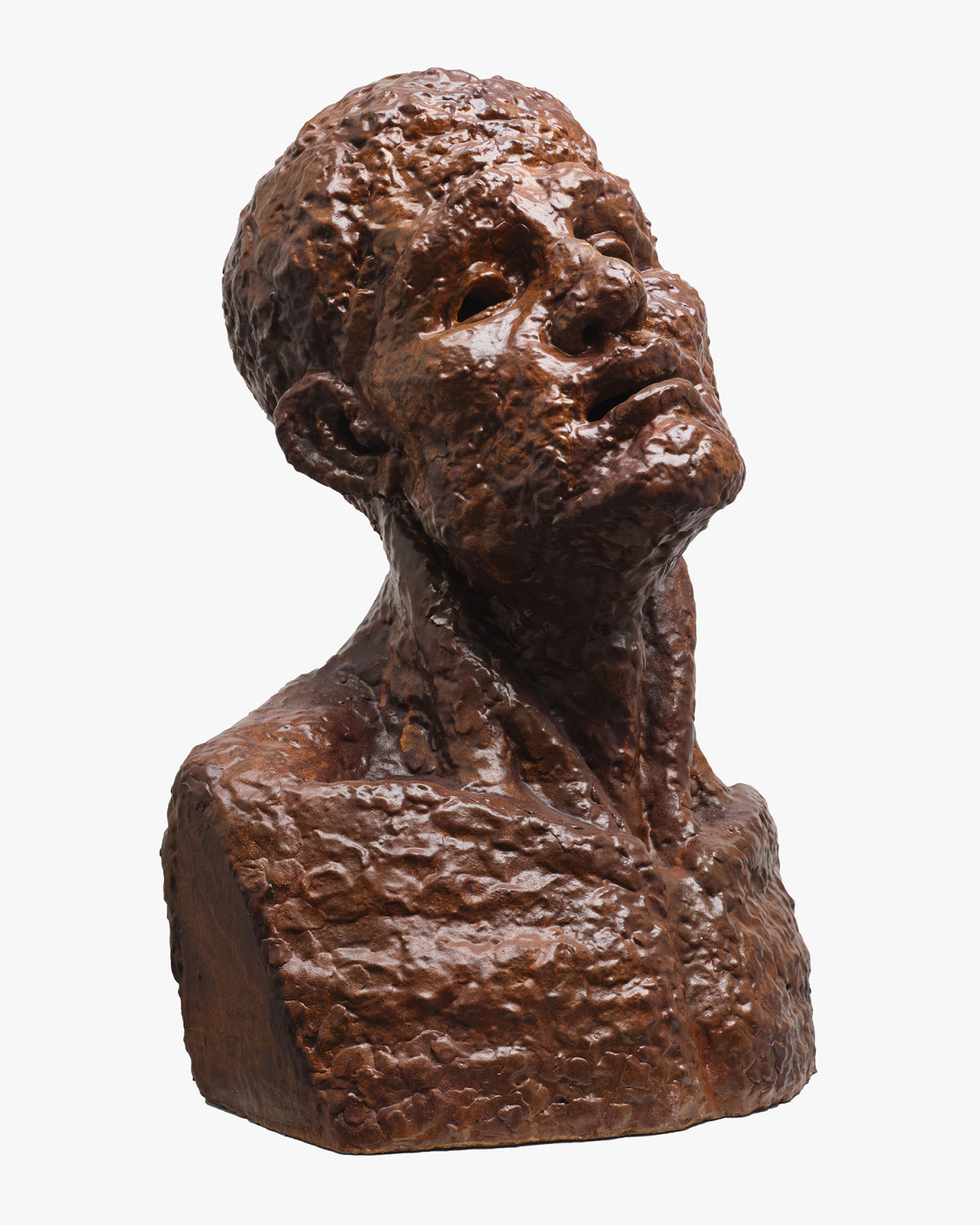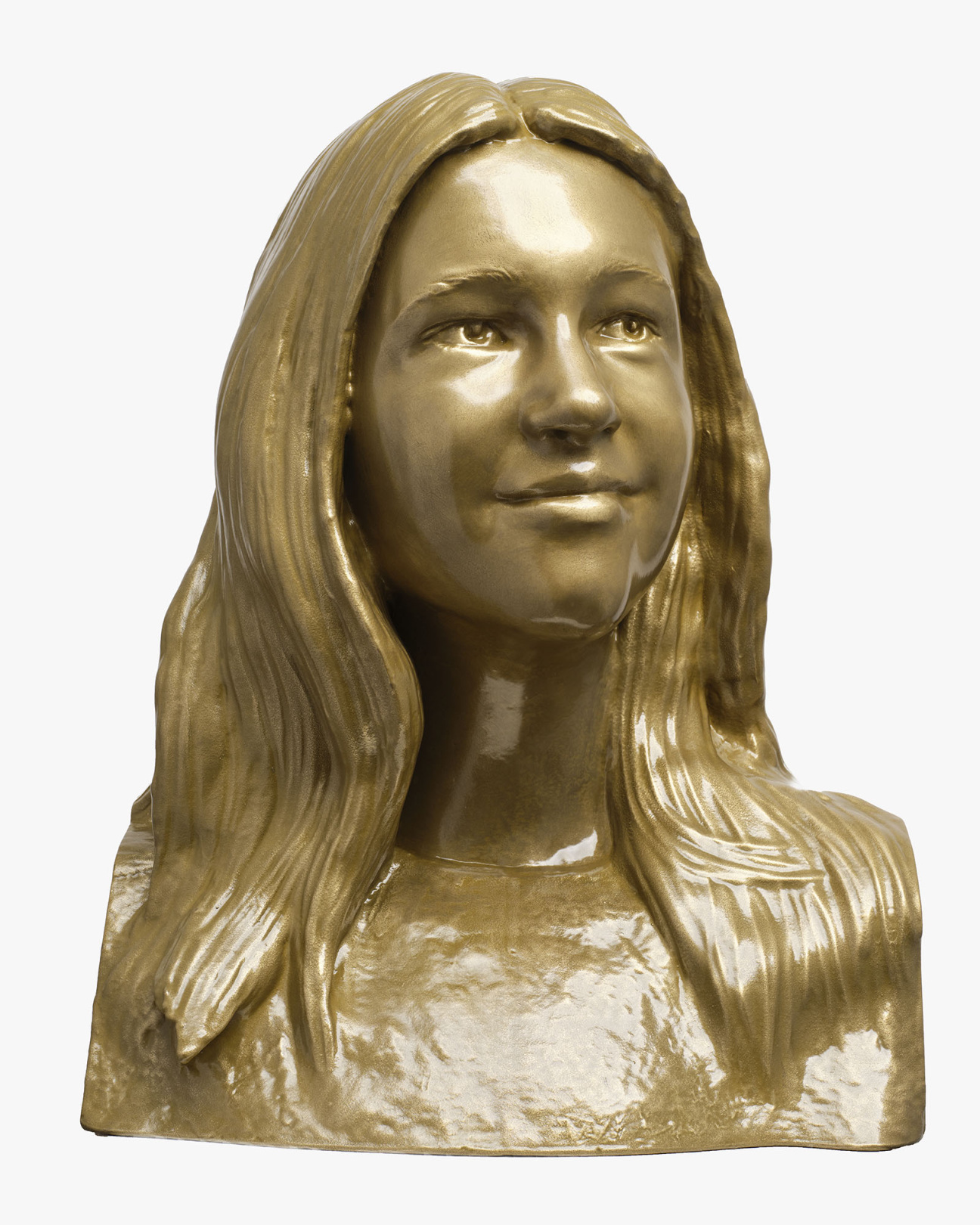
“As someone who has spent most of my life outside of Greece and identifies as Greek-American, I've always been interested in my heritage,” says George Petrides. The Athens-born, New York-based sculptor splits his time between his homeland and the city that never sleeps, a dichotomy that leaves him free to approach his roots with endless curiosity. “I'm a Greek abroad exploring what makes modern Greece work.”
Petrides's latest show, in keeping with this unique perspective, is at once sweeping in its scope and deeply personal. Aptly titled "Hellenic Heads: George Petrides, A Personal Exploration of Greek History and Culture Over 2,500 Years," the show features six three-foot-tall busts, each representing an important moment in Greek history as embodied by the visage of one of the artist's loved ones. Just in time for the 2024 Venice Biennale, the traveling exhibition landed at its fifth stop in the city's San Giorgio dei Greci courtyard, which adjoins The Hellenic Institute of Byzantine and Post-Byzantine Studies, earlier this week. Presented by the Embassy of Greece in Rome and the Greek community in Venice, Petrides brings to the global art-world's stage his own investigation of self.

The six sculptures correspond to several historically significant eras—Ancient Greece, the Byzantine Empire, the War of Independence, the Burning of Smyrna, the Nazi Occupation, the Greek Civil War, and the present day. The sculptor's grandmother served as the model for The Refugee: To Lose and to Rebuild—escaping Smyrna in 1922, while his parents lived through the Nazi occupation and War of Independence.
The artist's mother was also the inspiration for Aretaieia, 2024—a yet-to-be unveiled permanent sculpture that will grace the entrance to the Aretaieion University Hospital in Athens, where Petrides was born. The work, a full-body statue of an expectant mother, will symbolize the care and dedication that are the core tenets of the hospital's ethos. "I am humbled to have Aretaieia, inspired by my love for my mother, be part of this leading University Hospital in the city of Athens where my mother gave birth to me many years ago," Petrides explains. "In creating the sculpture, I have drawn on ancient Greek sculptural traditions while using state of the art technology to fabricate her. I hope she will offer inspiration to the many patients, families and medical students who come to the hospital every day.”

Petrides had his daughter pose for Kore: Our Hopes for Our Children, her face looking into the future. “That one is specifically about how I feel about a Greek child today thinking about Greece’s development. That’s a very touchy subject. It's as if I said, ‘How do you feel about the United States in the next 30 years?’”
Using a combination of techniques—including hand-building with clay, digital sculpting, and even 3-D printing with recycled plastic—Petrides imbues each work with a sense of legacy and time-worn gravitas. Thalia: Foundation of Western Civilization, turns blue thanks to a custom patina. Man of Two Wars: the Greek and the Jew is a rich red, the rusted iron adding a sense of forlornness to a self-portrait of Petrides himself.

“People relate to the work because it's personal and emotional, and a lot of people are interested in Greek culture,” Petrides says of the positive feedback he received. That exhibition has since morphed into a global tour: After Venice, "Hellenic Heads" will visit three more venues across Europe and Asia. For the sculptor this epic inquiry into his own history—and the history of Western culture—was never intended to take flight. “I didn't plan any of that," he says with a laugh. "If I had planned it, it would never have succeeded.”
Showing "Hellenic Heads" in Venice promises an interesting cross-section of viewers for the artist. The Greeks are the oldest non-Italian community in the city, and Petrides is showing his work in parallel with the Biennale’s pavilions which represent new stitches in the cultural narratives of their respective cultures. “I am honored that my work is in the courtyard of this church that was built in 1458,” Petrides says.
"Hellenic Heads" is on view through November 2024 in the courtyard of San Giorgio dei Greci.










 in your life?
in your life?

